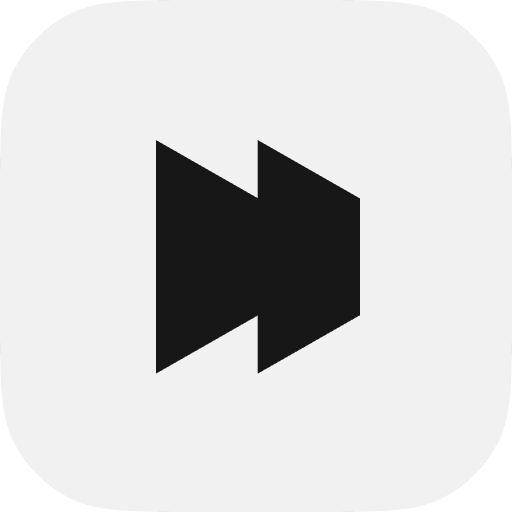article
Documentation at Scale is Broken. Here’s How We’re Fixing It.
The core problem with managing technology at scale is complexity. Here's how we're taking a fundamentally different approach to managing it.
Have you read The Three-Body Problem? In it, the alien Trisolarans construct a massive coordinated computer system using millions of humans (well, Trisolarans, technically) to meticulously perform manual calculations. Whenever I see large engineering teams trying desperately to keep technical documentation current and comprehensive, I’m reminded of that “human formation computer.”
The immense effort, coordination, and meticulous attention to detail required to manually maintain documentation at scale are staggering—and unsustainable.
The Root of the Problem: Complexity
Modern technical systems, whether in finance, aerospace, semiconductors, or consumer apps—are growing faster than our ability to reason about them. This isn’t just a tooling issue. It’s a scale issue. As the number of components in a system grows linearly, the number of possible interactions grows exponentially. This makes it hard not just to understand individual parts, but to grasp how everything fits together. LLMs are struggling with this, too.
To tame this complexity, teams turn to documentation to describe architecture, write onboarding guides, maintain API references, create internal wikis, and field a never-ending stream of questions in Slack. But here's the catch: documentation is fundamentally unscalable when done by hand.
The Three Laws of Documentation Pain
First, documentation requires ongoing manual effort from experts. These are the people who understand how the systems work—but they’re also the ones with the least time to document them.
Second, there’s no systematic way to create or validate documentation. No universal definition of “done.” No mechanism to ensure accuracy across fast-changing systems.
Third, documentation has to be updated manually every time something changes—which, in software, is constantly. Code evolves, interfaces shift, requirements change, and the documentation is always lagging behind.
The result is a familiar story: Documentation is out of date. Knowledge is fragmented across teams. Engineers waste time trying to reverse-engineer systems. Onboarding drags out. Miscommunication slows down delivery. Customers get frustrated. And leadership makes critical decisions without full context.
A New Paradigm: Managing Complexity with AI
At Driver, we’ve taken a fundamentally different approach.
Driver is an AI-powered documentation platform that gives organizations full visibility into how their technology works, from top to bottom. We don’t just generate documentation—we create a shared source of truth that stays current, scales effortlessly, and bridges the gap between engineers, leaders, and end users.
What Driver Does
Driver starts at the source code. Our platform analyzes your codebase to generate structured, detailed, and accurate documentation—automatically. This isn’t just about scraping comments or formatting markdown. It’s about understanding context and translating it into usable, searchable, high-quality documentation.
From there, Driver supports layered documentation. Engineers and stakeholders can build high-level reports, strategic docs, and onboarding guides directly on top of the foundational technical docs. These long-form documents are co-authored with AI assistance, reusable templates, and built-in collaboration tools—turning insights into shared knowledge fast.
Because Driver is connected to your systems, it stays in sync. When your code changes, your documentation updates automatically. No manual backlogs. No outdated instructions. Just reliable, always-current understanding.
Driver also makes it easy to publish and share this knowledge with the people who need it. Whether you're serving internal engineers or external customers, you can create polished, searchable, secure documentation portals that reflect the latest state of your systems.
Who Driver Helps
Driver supports every team that touches technology:
Engineers get instant visibility into complex codebases, spend less time documenting, and onboard faster. They stop wasting time reverse-engineering unfamiliar systems and start building with confidence.
Leaders and stakeholders gain clarity into how systems work so they can make smarter, faster decisions. They can align teams, spot risks, and move forward with shared understanding.
Customers and end-users benefit from accurate, interactive documentation that helps them get answers faster, reduces support load, and improves the overall experience.
Driver is also a great ally for technical writers, automating the most tedious parts of documentation, and for DevOps and infrastructure teams, who rely on Driver to make complex systems understandable and transparent.
Driver’s Real World Impact
Driver doesn’t just change how documentation gets made—it changes how organizations work. With Driver, teams see:
Codebase Understanding: 85-95% accurate responses to complex queries spanning multiple components
Faster Onboarding: 40-60% reduction in time-to-productivity for new engineers
Customer Documentation: 85% reduction in time spent producing customer-facing documentation
Cost of Documentation: 90% reduction in developer time spent documenting
Recently, one of our customers' product Directors and Engineering Directors were trying to figure out whether an internal tool spanning infrastructure code, front-end components, and multiple APIs was meant for internal data entry or data governance. Driver gave them instant clarity. By surfacing accurate, current documentation in context, they resolved the issue quickly and made the right decision about what to build next.
Why It Matters
Managing complexity is the defining challenge of modern software. Tesler’s Law—also known as the law of conservation of complexity—reminds us that complexity can’t be eliminated, only redistributed. The question is where that complexity lives, and who has to deal with it.
With Driver, we don’t push that burden onto engineers, writers, or support teams. We automate it. We create a system that makes complexity manageable by giving organizations a shared, real-time understanding of how their technology works.
This is how we create a world where every system is documented and understood, and technical transparency (finally!) becomes the default.
Next Stop
How Driver Works: Learn about our Driver Transpiler and our novel approach to exhaustive symbol-level documentation.
Working with Driver: We answer your security, IP, copyright, and legal questions in this FAQ.
Get the Most Out of Driver: The difference between a beginner and a power user within Driver comes down to the skill of intent expression. Read our Guide to Prompting here.

Automated Technical Documentation
Save time documenting and get back to building extraordinary things.

